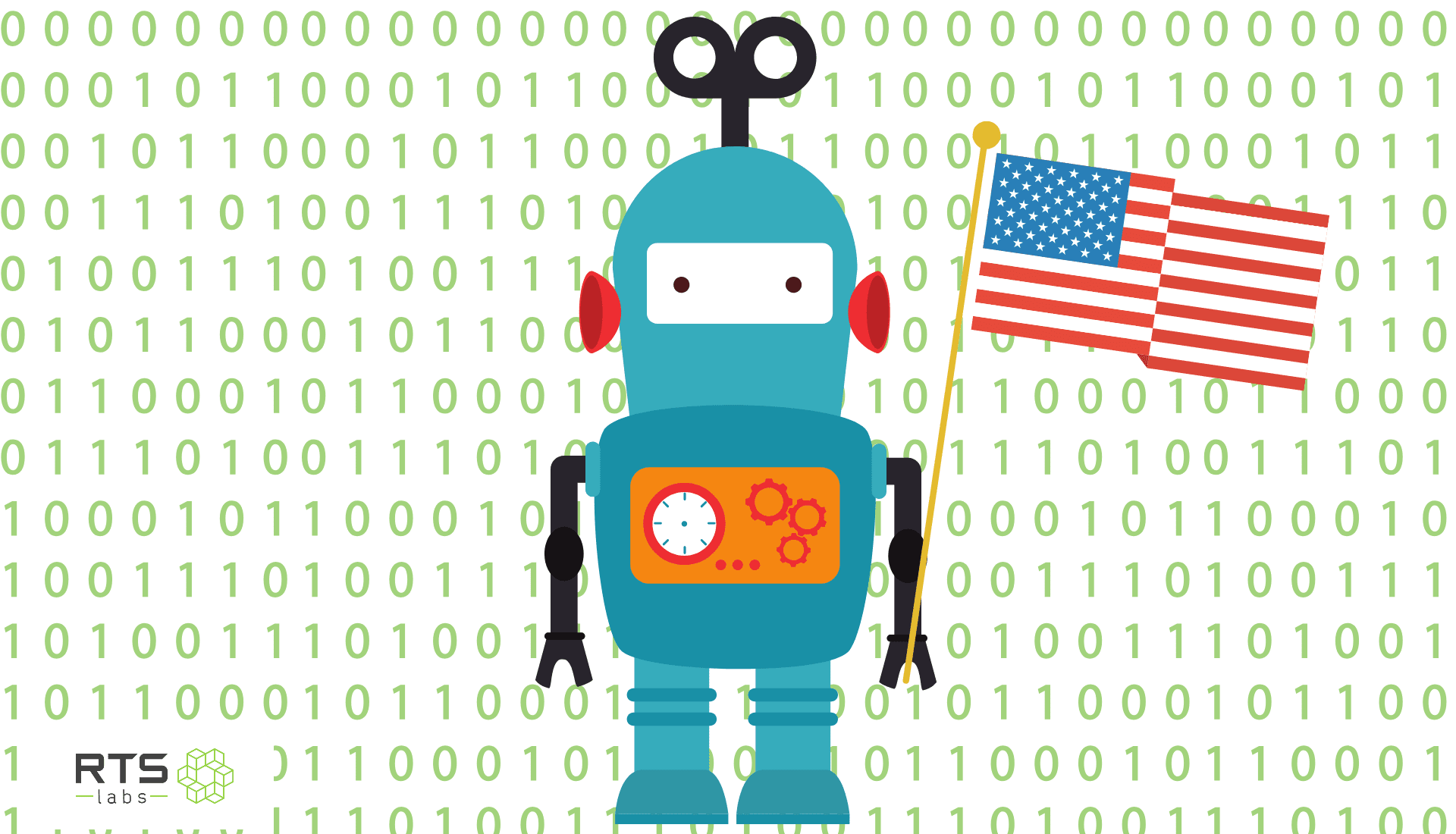-
American AI Initiative: Establishing clear regultion policies on ethical AI usage, data privacy, and algorithmic accountability is crucial for fostering public trust and innovation.
-
Workforce Transformation: Reskilling programs and technical education are essential to prepare the workforce for the rapid adoption of AI-driven technologies.
-
Global Competitiveness: To maintain its leadership, the U.S. must invest in AI research, infrastructure, and standardization while learning from global initiatives like those in the EU and China.
AI and the Future of Innovation
Artificial Intelligence (AI) has rapidly transformed industries worldwide, becoming a cornerstone of technological innovation. From automating repetitive tasks to driving sophisticated data analytics, AI’s potential seems limitless.
To remain a leader in this space, the United States launched the American AI Initiative, an executive order aimed at fostering AI innovation and ensuring national competitiveness.
But what does this initiative mean today, several years after its inception? How has it impacted businesses, workforce development, and AI regulation? Let’s explore how the American AI Initiative shapes the future of AI and what opportunities and challenges lie ahead.
1. Advancing Research and Development
A cornerstone of the American AI Initiative is its focus on research and development (R&D). By opening government datasets to researchers and providing access to cloud computing resources, the initiative has unlocked opportunities to innovate in:
- Public Health: Leveraging CDC data to enhance disease prevention and pandemic preparedness. For example, AI has been used to track COVID-19 variants and predict outbreaks, enabling more targeted responses.
- Climate Science: Developing AI solutions to address climate change, such as optimizing renewable energy grids or predicting natural disasters with greater accuracy.
- Economic Insights: Analyzing trends across diverse populations to drive inclusive economic growth.
Real-World Applications
Startups in healthcare, for example, have used government-provided cloud computing resources to develop AI models that predict patient outcomes and optimize treatment plans. Such access levels the playing field, enabling smaller firms to compete in innovation-heavy industries.
The Road Ahead
For R&D to thrive, increased collaboration between government agencies, private firms, and academic institutions is essential. Additionally, greater transparency in how government data is shared will encourage broader participation.
2. The Push for Ethical Regulation
AI’s rapid adoption raises critical questions about data ethics and accountability. The initiative calls for creating federal guidelines to regulate AI applications, addressing concerns like:
- Data Privacy and Security: Ensuring that sensitive personal information remains secure amid rising data breaches.
- Algorithmic Bias: Cases like biased hiring algorithms and unequal loan approvals highlight the need for ethical oversight.
- Facial Recognition: Balancing public safety benefits with concerns over surveillance and privacy violations.
Ethical Dilemmas
In 2023, several companies faced backlash when their AI tools were found to perpetuate discrimination. One well-known case involved an AI-powered recruitment tool that systematically overlooked female candidates for technical roles. These issues underline the urgent need for standardized regulations.
Opportunities for Businesses
Organizations that adopt transparent AI practices will gain a competitive advantage as consumers increasingly value ethical responsibility. Leveraging AI with built-in ethical frameworks can also improve trust and brand loyalty.

3. Workforce Development for an AI-Driven Economy
Automation fueled by AI is reshaping the job market, creating demand for new skills while displacing traditional roles. The American AI Initiative includes provisions for:
- Reskilling programs: Helping workers adapt to AI-driven tools and roles.
- Apprenticeships and Fellowships: Bridging the gap between academia and industry.
- Skill-Based Education: Preparing younger generations for future job markets.
Challenges Ahead
Despite these efforts, a 2024 report found that 62% of businesses struggle to find qualified AI professionals, underscoring the need for robust training programs. Additionally, rural and underserved communities often lack access to these reskilling initiatives, further widening the digital divide.
Solutions
Expanding partnerships with universities and tech firms can help bring workforce training programs to more regions. Additionally, incentivizing businesses to provide on-the-job training will ensure more workers can transition into AI-driven roles.
4. The Need for Technology Standards
Interoperability and reliability are key to ensuring AI systems are secure and scalable. Standardization efforts under the initiative aim to:
- Define ethical guidelines for AI development.
- Ensure AI applications across industries meet uniform quality benchmarks.
Why Standards Matter
Without clear standards, AI tools may operate in silos, reducing efficiency and creating security vulnerabilities. For example, a lack of standardization in healthcare AI applications can lead to miscommunication between systems, potentially endangering patients.
Ongoing Efforts
The National Institute of Standards and Technology (NIST) is working on creating a cohesive framework for AI applications, which includes reliability, security, and ethical considerations. Businesses that align with these standards early will be better positioned to scale their AI initiatives.
5. Global Comparisons: How Does the U.S. Stack Up?
While the American AI Initiative is a promising step, other countries have taken more aggressive approaches to AI innovation:
- China’s AI Plan: The country has invested billions in R&D, with a goal of becoming the global AI leader by 2030. Their focus on AI in areas like facial recognition and surveillance has also drawn criticism for ethical concerns.
- European Union Regulations: The EU’s strict AI Act focuses on ethical AI, requiring companies to comply with stringent guidelines around data usage and algorithmic fairness.
Lessons for the U.S.
The U.S. can learn from the EU’s emphasis on ethics while leveraging its strong private sector to drive innovation. By collaborating internationally, the U.S. can also ensure that AI regulations remain competitive on a global scale.

6. Funding: The Critical Piece of the Puzzle
While the initiative underscores the importance of federal funding for AI, it has faced criticism for vague budget allocations. Funding is crucial for:
- AI-Specific R&D: Ensuring the U.S. remains competitive in cutting-edge research.
- Infrastructure Development: Building the computing power and cloud systems necessary to support AI growth.
- Education and Workforce Training: Closing the skills gap and preparing workers for the AI-driven economy.
Challenges
Many businesses express frustration at the lack of clear funding pathways. Federal grants often involve complex application processes, deterring smaller organizations from participating.
Maximizing the Potential of AI: What Businesses Should Do Next
The American AI Initiative lays a promising foundation for AI innovation but requires greater detail, funding, and collaboration to achieve its full potential. For businesses, this is an opportunity to integrate AI-driven solutions to enhance efficiency, innovation, and competitiveness.
Take Action
If you’re considering AI for your business—whether it’s data analysis, custom software, or workforce training—choosing the right tech partner is critical. Download our free guide to crafting the perfect RFP to find the best solutions tailored to your needs.






